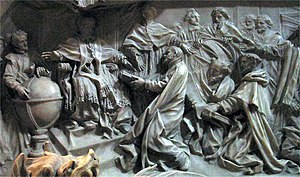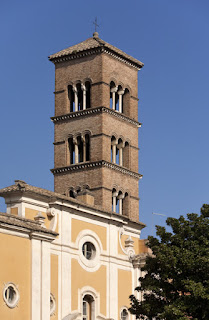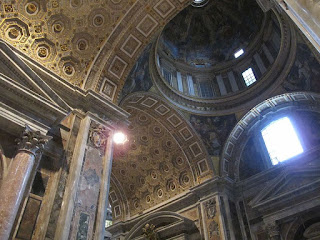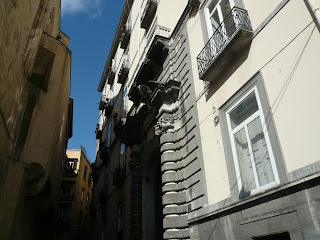Pontiff used his power to change the date overnight
 |
| Pope Gregory XIII took his papal name in honour of another reformer, Gregory I |
Gregory XIII is chiefly remembered for bringing in the Gregorian calendar, which is still the internationally accepted calendar today.
As Ugo Boncompagni, he studied law in Bologna and graduated in 1530. He later taught jurisprudence and among his students were the Cardinals Alessandro Farnese and Carlo Borromeo.
Before he took holy orders, Ugo had an affair with Maddalena Fulchini, who gave birth to his illegitimate son, Giacomo Boncompagni.
Pope Paul III summoned Ugo to Rome in 1538 to work for him in a judicial capacity. He went on to work for Pope Paul IV and Pope Pius IV. Ugo was made Cardinal Priest of San Sisto Vecchio and sent to the Council of Trent by Pius IV.
He was also sent to be legate to Phillip II of Spain and formed a close relationship with the Spanish King.
In 1572, after the death of Pope Pius V, the 70-year-old Cardinal Boncompagni was chosen to be the next pope and assumed the name of Gregory XIII, in homage to Pope Gregory I, who is remembered as a great church reformer.
 |
| Mathematician and astronomer Christopher Clavius was co-writer of the calendar |
The Roman College of the Jesuits grew under his direction and became an important centre of learning. It is now known as the Pontifical Gregorian University.
Gregory XIII is best known for replacing the Julian calendar, which had been in use since 45 BC, with the calendar produced by astronomer Luigi Giglio and the German Jesuit priest, mathematician and astronomer Christopher Clavius, making the year slightly shorter.
In the Julian calendar, each year was too long, meaning that the March equinox had slipped back to an earlier date over the centuries.
The Pope decreed in 1582 that the day after Thursday, 4 October would be Friday, 15 October. The new calendar became known as the Gregorian calendar and is now used universally.
Gregory XIII encouraged Phillip II of Spain in his plans to dethrone Elizabeth I of England, causing English Protestants to regard all Catholics as potential traitors.
 |
| Detail of the monument to Pope Gregory VIII in the Basilica of St Peter in Rome |
In Rome, Gregory XIII had work completed on the magnificent Gregorian Chapel in the Basilica of Saint Peter and extended the Quirinale palace. He appointed his illegitimate son, Giacomo, as Castellan of Sant’Angelo and Gonfalonier of the Church. Venice enrolled Giacomo among its nobles and Phillip II made him one of his army generals. Gregory also helped his son acquire the Duchy of Sora on the border between the Papal States and the Kingdom of Naples.
To fund these projects, Gregory XIII confiscated houses and properties belonging to the church.
Pope Gregory XIII became ill with a fever in 1585 and died on 10 April, aged 83. He was succeeded by Pope Sixtus V, who found the papacy had been left considerably impoverished.
 |
| The campanile of the Basilica of San Sisto Vecchia, where Gregory XIII was priest |
The Basilica of San Sisto Vecchia in Piazzale Numa Pompilo in Rome, where Pope Gregory XIII was Cardinal Priest for seven years, is one of 60 minor basilicas in the city. The basilica was built near the Baths of Caracalla in the fourth century and is dedicated to Pope Sixtus II, who was martyred in 258. His relics were transferred to the church from the Catacomb of Callixtus in the sixth century. San Sisto was rebuilt in the 13th century and restored in the 18th century, preserving only the bell tower, apse and a 13th century fresco cycle from the medieval church.
 |
| The dome of the Gregorian Chapel, finished by Giacomo della Porta, in St Peter's Basilica |
Pope Gregory XIII commissioned the architect Giacomo della Porta to complete the work started by Michelangelo on the chapel in St Peter’s Basilica that was to be named after the pontiff. It has been described as ‘the most beautiful chapel in the world’ because of its marbles, mother-of-pearl, precious stones, gilded bronze, multi-coloured mosaics and stucco ornamentation. The monument to Pope Gregory XIII in white marble, executed by Milanese sculptor Camillo Rusconi, is in the Basilica near the entrance to the Gregorian Chapel. The Pope is portrayed giving his blessing on top of an urn bearing a relief showing the promulgation of the Gregorian calendar in 1852.
Also on this day:
1625: The death of religious composer Ruggiero Giovanelli
1655: The death of Pope Innocent X
1797: The tricolore flag is hoisted for the first time
1920: The birth of actor Vincent Gardenia
Home
.




